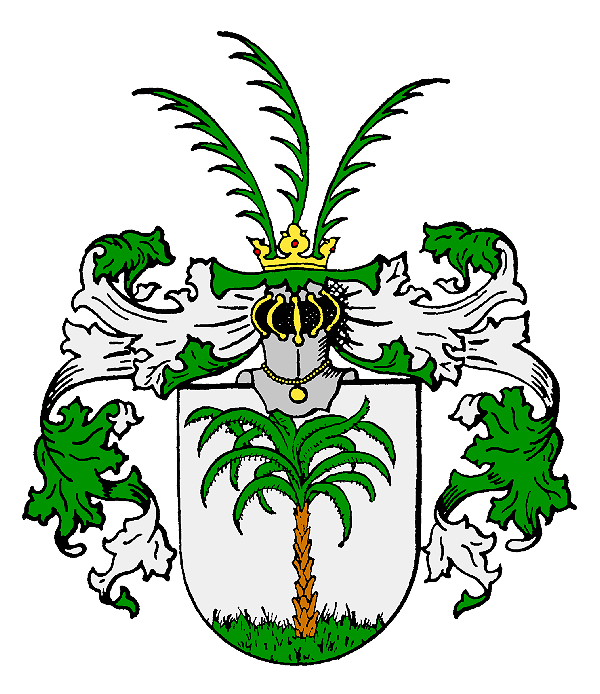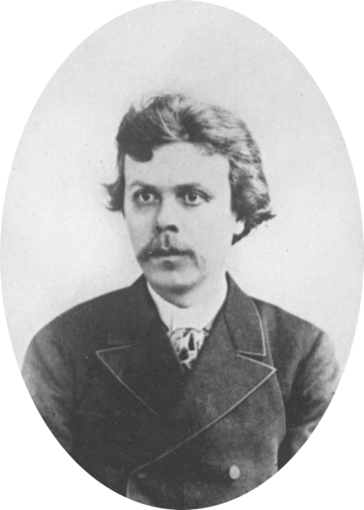|
Capoeta Capoeta
''Capoeta capoeta'' is a species of West Asian cyprinid fish, including forms called the Caucasian scraper. The scientific name is derived from the Georgian and Azeri local name ''kapwaeti''. Some taxonomic authorities classify Capoeta sevangi as a subspecies. Sources Capoeta ''Capoeta'', also known as scrapers, is a genus of fish in the family Cyprinidae found in Western Asia. The distribution extends from Turkey to the Levant, to Transcaucasia, Iraq, Turkmenistan , in Armenia,particularly in lake Sevan and no ... Fish described in 1773 Taxa named by Johann Anton Güldenstädt {{Cyprininae-stub ... [...More Info...] [...Related Items...] OR: [Wikipedia] [Google] [Baidu] |
Johann Anton Güldenstädt
Johann Anton Güldenstädt (26 April 1745 in Riga, Latvia – 23 March 1781 in St. Petersburg, Russia) was a Baltic German naturalist and explorer in Russian service. Güldenstädt lost both his parents early, and from 1763 onwards studied pharmacy, botany and natural history in Berlin. At the age of 22, he obtained his doctorate in medicine at the University of Frankfurt in 1767. In the following year, he joined the Russian Imperial Academy of Sciences' expedition sent by Catherine II of Russia to explore the Russian empire's southern frontier. Güldenstädt travelled through Ukraine and the Astrakhan region, as well as the northern Caucasus and Georgia, both of which were almost entirely beyond the borders of the Russian empire. In March 1775 he returned to St Petersburg. The results of the expedition and Güldenstädt's edited expedition journal were published after his death by Peter Simon Pallas in ''Reisen durch Russland und im Caucasischen Gebürge'' (Travels in Russi ... [...More Info...] [...Related Items...] OR: [Wikipedia] [Google] [Baidu] |
Johann Jakob Heckel
Johann Jakob Heckel (23 January 1790 – 1 March 1857) was an Austrian taxidermist, zoologist, and ichthyologist from Mannheim in the Electoral Palatinate. Life Though not a formally trained biologist, he worked his way up through the ranks to eventually become the director of the Fish Collection at the Naturhistorisches Museum in Vienna. For the most part, he was not a traveler or explorer like many of the scientists of the time, he remained in Vienna, where he studied and catalogued specimens sent to him from the field. Among those who brought specimens to him were Karl Alexander Hügel, Joseph Russegger and Theodor Kotschy — involving collection activities in Kashmir, the Middle East and northeastern Africa that greatly enriched the Vienna museum. Fish were his specialty and he worked with many of the greatest ichthyologists of his time including Cuvier, Valenciennes, Bonaparte, Müller, and Troschel. [...More Info...] [...Related Items...] OR: [Wikipedia] [Google] [Baidu] |
Alexander Keyserling
Alexander Friedrich Michael Lebrecht Nikolaus Arthur Graf von Keyserling (15 August 1815 – 8 May 1891) was a Baltic German geologist and paleontologist from the Keyserlingk family of Baltic German nobility. Career Alexander von Keyserling was born on at the Kabillen Manor, , Courland Governorate (in present-day Kabile, Kuldīga Municipality, Latvia), then part of the Russian Empire. His father was Count Heinrich Diedrich Wilhelm von Keyserling, 3rd Count of Rautenburg, was a spokesman, and in Courland, his mother was Baroness Anna Amalie Benigna . His family was of Westphalian origin and was originated in Herford, they were considered part of the ''Uradel'', or old nobility. The first ever mentioned member was Albert Keserlink (1443-1467 or 1468), the mayor of Herford. Alexander belonged to the ''House of Rautenburg- Telsen-Paddern'', which was a subdivided branch of the Prussian comital branch. The branch's founder Dietrich II von Keyserling, Herr auf und , was ... [...More Info...] [...Related Items...] OR: [Wikipedia] [Google] [Baidu] |
Karl Kessler
Karl Fedorovich Kessler (19 November 1815 – 3 March 1881) was a German-Russian zoologist and author of zoological taxa signed ''Kessler'', who was mostly active in Kyiv, Ukraine. He conducted most of his studies of birds in Ukrainian regions of the Russian Empire: Kiev Governorate, Volyn Governorate, Kherson Governorate, Poltava Governorate and Bessarabia. He also studied the fish of the Dniester, Dnieper, and Southern Bug rivers, and on the Ukrainian coast of the Black Sea. Kessler was one of the first zoologists to propose that mutual aid, rather than mutual struggle, was the main factor in the evolution of a species. The anarchist Peter Kropotkin later developed this theory in his book '' Mutual Aid: A Factor of Evolution''. Tribute The Kessler's gudgeon ''(Romanogobio kesslerii)'' was named after him. See also * :Taxa named by Karl Kessler *Antoine Laurent Apollinaire Fée *Jean-Charles Houzeau *Alphonse Toussenel Alphonse Toussenel (March 17, 1803 – April 30, ... [...More Info...] [...Related Items...] OR: [Wikipedia] [Google] [Baidu] |
Alexander Nikolsky
Alexander Mikhailovich Nikolsky (Russian: Александр Михайлович Никольский; February 18, 1858 – December 8, 1942) was a Russian and Ukrainian zoologist born in Astrakhan. From 1877 to 1881, he studied at the University of St. Petersburg, earning his doctorate several years later in 1887. From 1881 to 1891, he took part in numerous expeditions to Siberia, the Caucasus, Persia, Japan, et al. In 1887 he became an associate professor in St. Petersburg, later becoming director of the herpetology department at the Zoological Museum of the Academy of Sciences (1895). In 1903 he relocated as a professor to the Kharkiv University. In 1919 he was elected a member at the Academy of Sciences of Ukraine. Among his written works were ''Herpetologia Caucasica'' (1913), and volumes on reptiles and amphibians that were part of the series "Fauna of Russia and Adjacent Countries". He is the taxonomic authority of 26 reptile species. The viper '' Vipera nikols ... [...More Info...] [...Related Items...] OR: [Wikipedia] [Google] [Baidu] |
Cyprinid
Cyprinidae is a family of freshwater fish commonly called the carp or minnow family. It includes the carps, the true minnows, and relatives like the barbs and barbels. Cyprinidae is the largest and most diverse fish family and the largest vertebrate animal family in general with about 3,000 species, of which only 1,270 remain extant, divided into about 370 genera. Cyprinids range from about 12 mm in size to the giant barb (''Catlocarpio siamensis''). By genus and species count, the family makes up more than two-thirds of the ostariophysian order Cypriniformes. The family name is derived from the Greek word ( 'carp'). Biology and ecology Cyprinids are stomachless fish with toothless jaws. Even so, food can be effectively chewed by the gill rakers of the specialized last gill bow. These pharyngeal teeth allow the fish to make chewing motions against a chewing plate formed by a bony process of the skull. The pharyngeal teeth are unique to each species and are used by s ... [...More Info...] [...Related Items...] OR: [Wikipedia] [Google] [Baidu] |
Georgian Language
Georgian (, , ) is the most widely-spoken Kartvelian language, and serves as the literary language or lingua franca for speakers of related languages. It is the official language of Georgia and the native or primary language of 87.6% of its population. Its speakers today number approximately four million. Classification No claimed genetic links between the Kartvelian languages and any other language family in the world are accepted in mainstream linguistics. Among the Kartvelian languages, Georgian is most closely related to the so-called Zan languages (Megrelian and Laz); glottochronological studies indicate that it split from the latter approximately 2700 years ago. Svan is a more distant relative that split off much earlier, perhaps 4000 years ago. Dialects Standard Georgian is largely based on the Kartlian dialect. [...More Info...] [...Related Items...] OR: [Wikipedia] [Google] [Baidu] |
Azerbaijani Language
Azerbaijani () or Azeri (), also referred to as Azeri Turkic or Azeri Turkish, is a Turkic language from the Oghuz sub-branch spoken primarily by the Azerbaijani people, who live mainly in the Republic of Azerbaijan where the North Azerbaijani variety is spoken, and in the Azerbaijan region of Iran, where the South Azerbaijani variety is spoken. Although there is a very high degree of mutual intelligibility between both forms of Azerbaijani, there are significant differences in phonology, lexicon, morphology, syntax, and sources of loanwords. North Azerbaijani has official status in the Republic of Azerbaijan and Dagestan (a federal subject of Russia), but South Azerbaijani does not have official status in Iran, where the majority of Azerbaijani people live. It is also spoken to lesser varying degrees in Azerbaijani communities of Georgia and Turkey and by diaspora communities, primarily in Europe and North America. Both Azerbaijani varieties are members of the Oghuz ... [...More Info...] [...Related Items...] OR: [Wikipedia] [Google] [Baidu] |
Capoeta Sevangi
''Capoeta sevangi'' is a cyprinid fish endemic to Lake Sevan in Armenia. Some taxonomic authorities classify it as a subspecies of '' Capoeta capoeta''. It previously dominated in the fish landings, along with the Sevan trout The Sevan trout (''Salmo ischchan'') is an endemic fish species of Lake Sevan in Armenia, known as ishkhan (իշխան, ) in Armenian. It is a salmonid fish related to the brown trout. The fish is endangered, because various competitors were .... Annual harvest could be 300-500 tonnes. Males reach maturity at 2–3 years and females in 5–7 years in females. They spawn in the lake in June–July, but there are also populations in the major rivers draining to the lake. The fish feed on detritus and as adults also on aquatic vegetation.B. GabrielyanSevan khramulya — Varicorhinus capoeta sevangi (Filippi, 1865)Red Book of Armenia www.mnp.am Since 1936, with the gradual deterioration of reproduction conditions due to the permanent exposure of many sp ... [...More Info...] [...Related Items...] OR: [Wikipedia] [Google] [Baidu] |
Capoeta
''Capoeta'', also known as scrapers, is a genus of fish in the family Cyprinidae found in Western Asia. The distribution extends from Turkey to the Levant, to Transcaucasia, Iraq, Turkmenistan , in Armenia,particularly in lake Sevan and northern Afghanistan. This genus is most closely related to ''Luciobarbus'' and in itself is divided into three morphologically, biogeographically and genetically distinct groups or clades: the Mesopotamian clade, the Anatolian-Iranian clade and the Aralo-Caspian clade.Ghanavi, H.R., Gonzalez, E.G. & Doadrio, I. (2016)Phylogenetic relationships of freshwater fishes of the genus ''Capoeta'' (Actinopterygii, Cyprinidae) in Iran.''Ecology and Evolution, 6 (22): 8205–8222.''Zareian, H., Esmaeili, H.R., Heidari, A., Khoshkholgh, M.R. & Mousavi-Sabet, H. (2016)Contribution to the molecular systematics of the genus ''Capoeta'' from the south Caspian Sea basin using mitochondrial cytochrome b sequences (Teleostei: Cyprinidae).''Molecular Biology ... [...More Info...] [...Related Items...] OR: [Wikipedia] [Google] [Baidu] |
Fish Described In 1773
Fish are aquatic, craniate, gill-bearing animals that lack limbs with digits. Included in this definition are the living hagfish, lampreys, and cartilaginous and bony fish as well as various extinct related groups. Approximately 95% of living fish species are ray-finned fish, belonging to the class Actinopterygii, with around 99% of those being teleosts. The earliest organisms that can be classified as fish were soft-bodied chordates that first appeared during the Cambrian period. Although they lacked a true spine, they possessed notochords which allowed them to be more agile than their invertebrate counterparts. Fish would continue to evolve through the Paleozoic era, diversifying into a wide variety of forms. Many fish of the Paleozoic developed external armor that protected them from predators. The first fish with jaws appeared in the Silurian period, after which many (such as sharks) became formidable marine predators rather than just the prey of arthropods. Mos ... [...More Info...] [...Related Items...] OR: [Wikipedia] [Google] [Baidu] |




_-_Georgian_language_alphabet.png)

